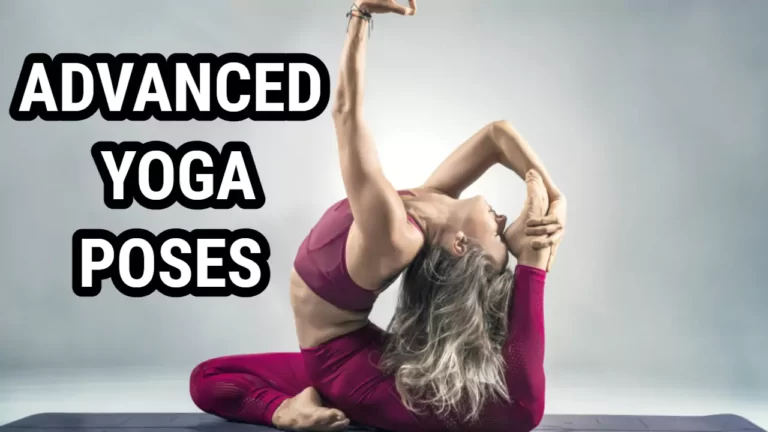Is Yoga Good For Spondylolisthesis – Best Yoga Therapy for Spondylolisthesis

Yoga is beneficial for those with spondylolisthesis. It can help reduce pain and discomfort, strengthen muscles, and improve flexibility. Certain poses are best suited for individuals with the this condition.
We will explore the benefits of yoga for those with spondylolisthesis. We will look at how practicing certain postures can help relieve pain and discomfort caused by this condition, as well as how regular practice can help strengthen muscles and improve flexibility.
What Is Spondylolisthesis

Spondylolisthesis is a condition where one of the spinal bones or disc slips out of its proper position. This can cause extreme pain and difficulty in movement, especially when it comes to bending and twisting the lower back. It can also affect other parts of the body such as the neck, shoulders, and hamstring in legs.
Fortunately, yoga has been proven to be an effective treatment for spondylolisthesis. Through specific poses that target the affected area, yoga can help strengthen muscles in the lower back and increase flexibility in the spine. With regular practice, it may even be able to reverse or reduce the symptoms of spondylolisthesis.
Yoga can be an excellent addition to any fitness routine. Whether you are looking for relief from existing pain or simply want to prevent future problems with your spine, yoga can provide many benefits that will help keep you healthy and mobile. With all these positives in mind, let’s take a look at what exactly this condition entails and what kind of symptoms might present themselves…
Symptoms Of Spondylolisthesis
Spondylolisthesis is a medical condition in which a vertebra, or bone in the spine, slips out of place and moves onto the vertebra below it. This can cause pain, numbness, tingling, and muscle weakness. Symptoms of spondylolisthesis can vary depending on the severity of the condition.
1. Pain: Pain is the most common symptom of spondylolisthesis. This pain can be localized to the lower spine, or it may radiate to the hips, buttocks, upper back and legs. In some cases, the person may have chronic low back pain limiting a person’s ability to move.
2. Numbness and Tingling: Numbness and tingling sensations in the lower back, hips, buttocks, and legs can occur.
3. Muscle Weakness: Weakness in the muscles of the lower back, hips, buttocks, and legs can occur. This may cause difficulty with balance and walking.
4. Limited Mobility: Limited mobility and flexibility in the lower back can occur. This can make it difficult to move, bend over, or twist.
5. Instability: Instability in the spine can occur. This can cause a person to feel as if their spine is “giving way” or slipping out of place.
Spondylolisthesis can be a painful and disabling condition. If you are experiencing any of the symptoms listed above, it is important to seek treatment..
Causes Of Spondylolisthesis
This can be caused by a variety of factors, including age-related wear and tear, a fracture in the spine, or even an inherited trait. It’s important to remember that spondylolisthesis is not necessarily painful – in fact, many people are unaware they have it until it is diagnosed by an X-ray or MRI scan. However, when symptoms do arise, yoga therapy for spondylolisthesis may be beneficial for alleviating pain and other issues associated with this condition.
Certain types of strenuous physical activities such as weightlifting and contact sports. Additionally, individuals with previous back injuries may be at increased risk for developing this condition as well.
No matter what has caused your particular case of spondylolisthesis, yoga therapy can help manage pain and promote healing. By carefully selecting poses appropriate for your individual needs and level of mobility, you can find relief from symptoms while also reaping the many benefits yoga has to offer. With that in mind, let’s explore some potential advantages of practicing yoga for spondylolisthesis…
Benefits Of Yoga Therapy For Spondylolisthesis

1. Pain Management: Yoga therapy can help reduce pain associated with spondylolisthesis by stretching the tight muscles and strengthening the weak ones. This helps to create balance in the body and reduce the pain.
2. Improved Posture: Yoga therapy can help improve posture by stretching the tight muscles and strengthening the weak ones. This can help to reduce the pain associated with spondylolisthesis.
3. Core Stability: Core stability exercises can help to improve balance, coordination and stability. This can help to reduce the risk of further injury and pain.
4. Improved Flexibility: Yoga therapy can help to improve flexibility by stretching the muscles and joints. This helps to reduce the pain associated with spondylolisthesis.
5. Improved Mobility: Yoga therapy can help to improve mobility by stretching the muscles and joints. This can help to reduce the pain associated with spondylolisthesis.
6. Improved Quality of Life: Yoga therapy can help to improve the overall quality of life by reducing pain, improving posture and mobility. This can help to reduce the severity and frequency of symptoms associated with spondylolisthesis.
Steps In Practicing Yoga To Manage Spondylolisthesis
1. Start with gentle stretching: Begin your practice by performing gentle stretches in order to warm up the body. Focus on the areas around the spine, such as the hips, shoulders, and neck.
2. Try standing postures: Standing poses can help strengthen and lengthen the muscles of the back and abdomen. Some postures to try are the Warrior Pose, Triangle Pose, and Half Moon Pose.
3. Incorporate inversions: Inversions can help decompress the spine and help with pain relief. Try poses such as Downward Dog, Shoulder Stand, and Plow Pose.
4. Use props: Props such as blocks and bolsters can help you find the best alignment in certain poses.
5. Practice breath-work: Pranayama (breath-work) can help reduce stress and tension in the body. Try simple breathing exercises such as alternate nostril breathing and long, deep breaths.
6. Listen to your body: It is important to listen to your body and to avoid any poses that cause discomfort or pain. It is also important to practice with caution and to stop if any pain or discomfort persists.
Specific Asanas (Yoga Postures) For Spondylolisthesis

1. Pigeon Pose
Pigeon Pose is a deep hip opener that helps to stretch the hip flexors, glutes, and psoas muscles. This pose can help to reduce tension in the lower back and improve posture.
2. Half Lord of the Fishes Pose
Half Lord of the Fishes Pose is a seated yoga pose that helps to stretch the spine and hips while calming the mind. It is a great pose for improving flexibility, balance, and strengthening the core.
3. Cat-Cow Pose
Cat-Cow Pose is a gentle, flowing yoga pose that helps to open the chest and strengthen the spine. It helps to increase flexibility, reduce stress, and improve circulation throughout the body.
4. Seated Forward Bend
Seated Forward Bend is a restorative yoga pose that helps to stretch out the lower back, hamstrings, and spine. It also encourages deep breathing, calming the mind and helping to reduce stress and fatigue.
5. Camel Pose
Camel Pose is a back-bend yoga pose that stretches the front body and opens the chest and heart. It increases strength in the upper back and arms, and helps to bring a sense of openness and emotional balance.
6. Cobra Pose
Cobra Pose is a back bends posture that opens up the chest, shoulders, and abdomen. It strengthens the spine, stretches the abdominal muscles, and helps to relieve stress and anxiety. it is one of the best spondylolisthesis exercise
7. Triangle Pose
Triangle Pose is a standing posture that helps to open the sides of the body and stretch the legs, hips, chest, and shoulders. It also helps to increase balance, strength, and stability, while promoting focus and concentration.
8. Wide-Legged Seated Forward Bend
Wide-Legged Seated Forward Bend is a great pose to open the hips and stretch the hamstrings. It also helps to improve your posture, reduce stress, and increase flexibility.
9. Bridge Pose
Bridge Pose is a great pose for strengthening the back, glutes, and hamstrings. It can also help to improve digestion, reduce anxiety, and relieve stress.
10. Locust Pose
Locust Pose is a great pose to strengthen the back muscles and improve posture. It also helps to open up the chest and expand the lungs, allowing for deeper breaths and improved circulation throughout the body.
These core strengthening practice of yoga asanas will not only build core muscles but also relax the body and aid in curing all problems related to your spine.
Breathing Techniques To Help Manage Pain And Inflammation Associated With Spondylolisthesis
Diaphragmatic Breathing: Diaphragmatic breathing is a type of deep breathing that helps to relax your body and reduce pain and inflammation. To do this, breathe in through your nose, allowing your chest to expand, and then exhale slowly through your mouth.
Alternate nostril breathing: To do this, sit in a comfortable position and use your right thumb to close your right nostril while breathing in through the left nostril. Then switch and close the left nostril while breathing out through the right nostril. Continue alternating your breathing from one nostril to the other.
Progressive Muscle Relaxation: This technique involves tensing and relaxing each muscle group in your body, starting from your feet and working up to your head. This helps to reduce tension and pain in the body.
Visualization: Visualization involves creating a calming scene in your mind and focusing on it while breathing deeply. This helps to reduce stress and pain associated with spondylolisthesis.
Guided Meditation: Guided meditation helps you to relax and focus your mind. It can help to reduce stress and pain associated with spondylolisthesis.
Biofeedback: Biofeedback is a type of therapy that helps to reduce pain and stress associated with spondylolisthesis. By using sensors to measure your body’s physical responses, you can learn to control your body’s responses to pain.
Also Read: How Is Yoga Helpful For Back Pain?
Frequently Asked Questions
What Are The Risks Associated With Yoga For Spondylolisthesis?
Yoga can provide many benefits for those living with spondylolisthesis, however there are risks associated with it. To minimize these risks, start slowly and gradually increase intensity, talk to an experienced yoga instructor and ask for modifications and use props for support.
Listening to your body and not pushing beyond your limits are also important for a safe and effective yoga practice.
Is Yoga The Best Form Of Exercise For Spondylolisthesis?
Yoga can be beneficial for managing spondylolisthesis, but other forms of exercise, such as strength training and low-impact activities such as swimming or cycling may help alleviate pressure on the spine, may be effective aswell.
It’s important to consult medical professionals and an experienced yoga therapist to tailor an exercise program that is safe and effective for one’s individual needs.
What Other Treatments Are Available For Spondylolisthesis?
Common treatments for spondylolisthesis include:
- Surgery: Depending on the severity of your condition, surgery may be recommended to correct your spine alignment.
- Physical Therapy: Physiotherapy techniques can help to strengthen muscles that support the spine while reducing pain and improving mobility.
- Pain Management: Medication or injections may be used to reduce inflammation and manage any pain associated with spondylolisthesis.
It’s important to seek medical advice from a qualified professional before choosing a treatment plan for spondylolisthesis. Working together with your doctor or physical therapist, you can create an individualized treatment plan tailored to your specific needs and goals.
With patience and dedication, you may find yourself well on the way towards recovery – feeling more capable than ever before!
Are There Any Yoga Poses To Avoid When Suffering From Spondylolisthesis?
Yes, there are certain yoga poses to avoid when suffering from spondylolisthesis.
- Dhanurasana (Bow Pose)
- Paschimottanasana (Seated Forward Bend)
- Janu Sirsasana (Head to Knee Pose)
- Sarvangasana (Shoulder Stand)
- Halasana (Plow Pose)
- Viparita Karani (Legs Up the Wall Pose)
How Often Should I Practice Yoga For Spondylolisthesis?
The amount and frequency of practice will depend on the severity of your spondylolisthesis. Generally, it is recommended to practice yoga 1-3 times per week, with each session lasting up to 60 minutes.
It is important to work with a qualified instructor who can provide modifications and guidance to prevent further injury and improve your condition.
Can you do yoga with lumbar spondylosis?
Yes, you can do yoga with lumbar spondylosis. However, it is important to consult a yoga teacher before beginning a yoga practice with this condition. They can recommend poses and modifications that are best suited for your condition. It is also important to listen to your body and avoid any poses that cause pain.
Related Read: Upper Back Yoga Poses: Imporve Your Posture and Strengthen Your Upper Body
Conclusion
Yoga can be an effective form of treatment for those suffering from spondylolisthesis. However, it is important to make sure you are doing the right poses and following the correct form in order to avoid any further injury or pain.
It is also important to consult with yoga practitioner before beginning any exercise program, as they can help determine what type and how often you should practice yoga for spondylolisthesis.
It is no surprise that yoga can be beneficial for spondylolisthesis sufferers, as it has been shown to provide relief from lower back pain and other associated symptoms. With proper guidance, yoga can be a safe way for those suffering from spondylolisthesis to manage their symptoms and improve their quality of life.





